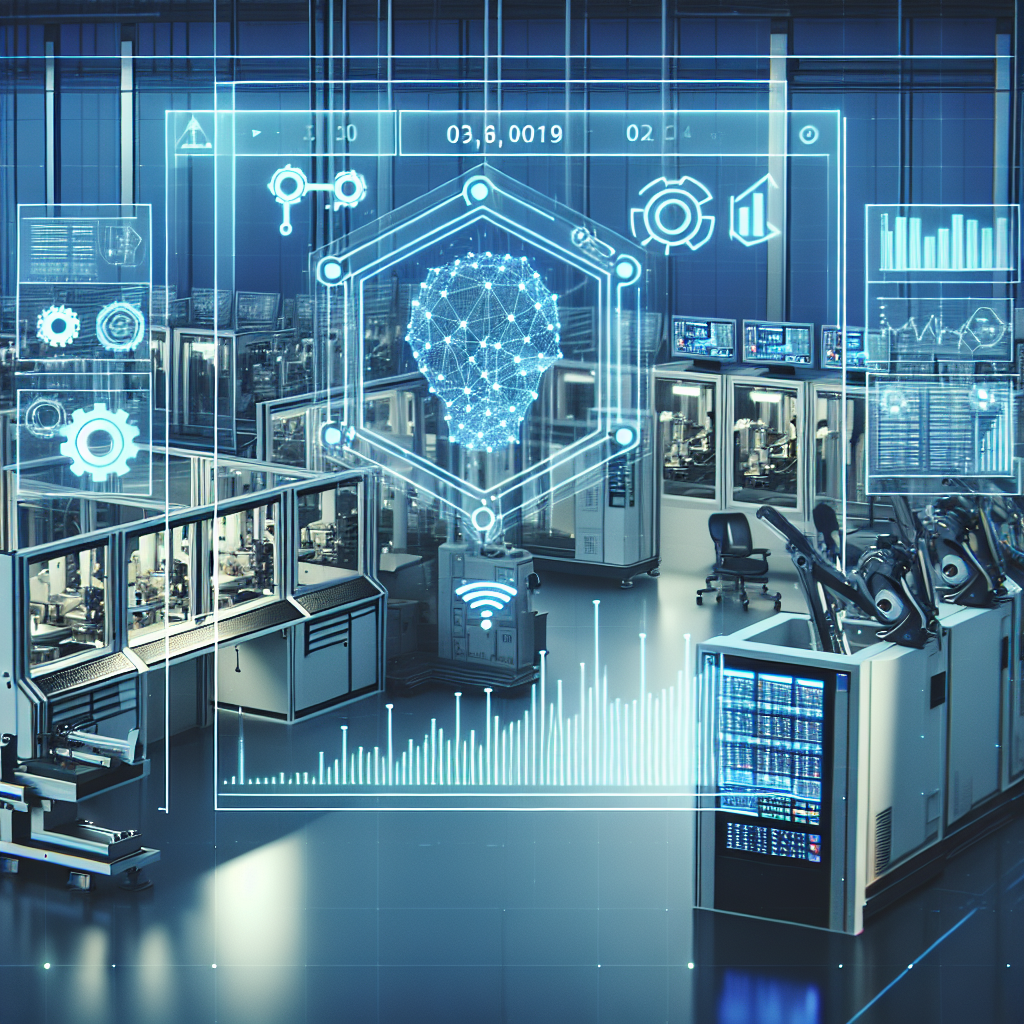AI and Digital Twins in Manufacturing Simulation
In recent years, advancements in artificial intelligence (AI) and digital twin technology have transformed the manufacturing industry. These technologies have revolutionized the way companies design, analyze, and optimize their manufacturing processes. By using AI and digital twins in manufacturing simulation, companies can create virtual replicas of their production systems, allowing them to test different scenarios and optimize their operations in a virtual environment before implementing changes in the real world. This not only saves time and money but also improves overall efficiency and productivity.
What is AI in Manufacturing Simulation?
Artificial intelligence (AI) refers to the simulation of human intelligence in machines that are programmed to think and learn like humans. In manufacturing simulation, AI is used to analyze data, predict outcomes, and optimize processes in real-time. By using AI algorithms, manufacturers can identify patterns and trends in their data, make accurate predictions, and optimize their operations to improve efficiency and productivity. AI can be used in various aspects of manufacturing, such as predictive maintenance, quality control, supply chain management, and production planning.
One of the key benefits of using AI in manufacturing simulation is its ability to detect anomalies and predict potential issues before they occur. By analyzing large amounts of data in real-time, AI algorithms can identify patterns that may indicate a problem and alert operators to take corrective action. This proactive approach helps to prevent costly downtime and improve overall equipment effectiveness (OEE).
Another advantage of using AI in manufacturing simulation is its ability to optimize production processes. By analyzing data from sensors, machines, and other sources, AI algorithms can identify bottlenecks, inefficiencies, and opportunities for improvement. Manufacturers can use this information to make data-driven decisions and optimize their processes to maximize productivity and reduce waste.
Overall, AI in manufacturing simulation enables companies to make more informed decisions, improve operational efficiency, and reduce costs. By leveraging AI technology, manufacturers can stay ahead of the competition and adapt to changing market demands more effectively.
What are Digital Twins in Manufacturing Simulation?
A digital twin is a virtual replica of a physical object or system that is created using real-time data and simulation models. In manufacturing, digital twins are used to create virtual replicas of production systems, equipment, and processes. By connecting physical assets to their digital twins, manufacturers can monitor, analyze, and optimize their operations in real-time.
Digital twins in manufacturing simulation enable companies to test different scenarios, simulate production processes, and optimize their operations before making changes in the real world. By creating a digital twin of their production system, manufacturers can analyze the impact of different variables, such as machine settings, production schedules, and material flow, on overall performance. This allows them to make data-driven decisions and optimize their operations to improve efficiency and productivity.
One of the key benefits of using digital twins in manufacturing simulation is their ability to provide real-time insights into production processes. By connecting physical assets to their digital twins, manufacturers can monitor performance metrics, such as machine uptime, cycle time, and energy consumption, in real-time. This real-time data enables operators to detect issues, identify opportunities for improvement, and make timely decisions to optimize their operations.
Another advantage of using digital twins in manufacturing simulation is their ability to facilitate collaboration and knowledge sharing. By creating a digital twin of their production system, manufacturers can provide stakeholders with a virtual representation of their operations, allowing them to visualize complex processes and understand how different variables impact performance. This shared understanding enables cross-functional teams to work together more effectively, identify opportunities for improvement, and drive continuous innovation.
Overall, digital twins in manufacturing simulation enable companies to optimize their operations, improve efficiency, and reduce costs. By creating virtual replicas of their production systems, manufacturers can test different scenarios, analyze performance metrics, and optimize their processes to stay competitive in today’s fast-paced manufacturing environment.
FAQs
Q: How does AI improve manufacturing simulation?
A: AI improves manufacturing simulation by analyzing data, predicting outcomes, and optimizing processes in real-time. By using AI algorithms, manufacturers can identify patterns and trends in their data, make accurate predictions, and optimize their operations to improve efficiency and productivity.
Q: What are the benefits of using digital twins in manufacturing simulation?
A: The benefits of using digital twins in manufacturing simulation include real-time insights into production processes, proactive maintenance, optimization of operations, collaboration and knowledge sharing, and improved efficiency and productivity.
Q: How can companies implement AI and digital twins in manufacturing simulation?
A: Companies can implement AI and digital twins in manufacturing simulation by collecting and analyzing data from sensors, machines, and other sources, creating virtual replicas of their production systems, connecting physical assets to their digital twins, monitoring performance metrics in real-time, and making data-driven decisions to optimize their operations.
Q: What are some examples of AI and digital twins in manufacturing simulation?
A: Some examples of AI and digital twins in manufacturing simulation include predictive maintenance, quality control, supply chain management, production planning, and optimization of production processes.
In conclusion, AI and digital twins have revolutionized the manufacturing industry by enabling companies to create virtual replicas of their production systems, analyze performance metrics, and optimize their operations in real-time. By leveraging AI technology and digital twin technology, manufacturers can improve efficiency, reduce costs, and stay competitive in today’s fast-paced manufacturing environment.

